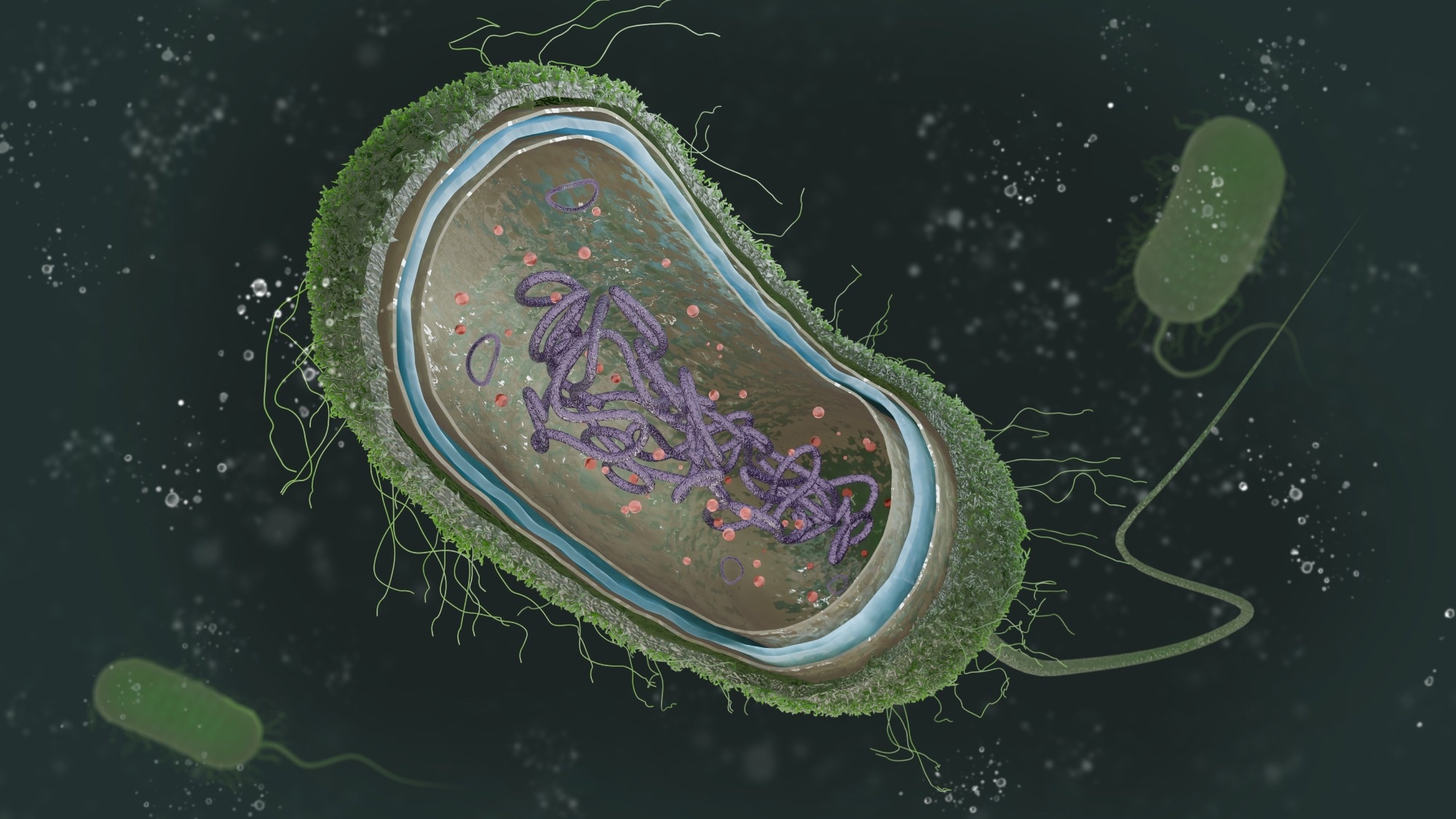Introduction
What is AMR?
What is halicin?
Discovery process
Mechanism of action
Efficacy against superbugs
Advantages and challenges
Conclusions
References
Further reading
Introduction
This article discusses the discovery of halicin, a potent antibiotic candidate identified through artificial intelligence (AI), and its divergent mechanism of action that allows it to circumvent existing antimicrobial resistance (AMR).
 Image Credit: Sanseon Saengsakaorat / Shutterstock.com
Image Credit: Sanseon Saengsakaorat / Shutterstock.com
What is AMR?
AMR is characterized by the ability of microorganisms to resist or survive the effects of commonly used antimicrobial agents.
According to the World Health Organization (WHO), bacterial AMR was directly responsible for 1.27 million global deaths and contributed to an additional 4.95 million deaths in 2019.2 The coronavirus disease 2019 (COVID-19) pandemic exacerbated the AMR crisis, as in U.S. hospitals, resistant hospital-onset infections and associated deaths increased by at least 15% between 2019 and 2020.3
Several factors have contributed to the current AMR crisis, including the widespread overuse and misuse of antibiotics. Technical challenges in existing research and development (R&D) platforms, including limited chemical classes for antibiotics, as well as slow and expensive methods, have further disincentivized pharmaceutical investment.1
To overcome these challenges, recent advances in AI have emerged as a transformative force capable of revitalizing the drug discovery process. AI models can analyze massive chemical libraries with unprecedented speed to identify or even generate novel molecular patterns and predict antibacterial activity.4
What is halicin?
Halicin is a potent, broad-spectrum antibiotic candidate rediscovered by researchers at the Massachusetts Institute of Technology through the use of a custom deep learning model. The identification of halicin serves as a pharmacological and clinical milestone, as it is one of the first documented instances of a novel antibiotic being discovered through an end-to-end AI-driven approach.4
Following its rediscovery, MIT researchers renamed the compound halicin in a direct homage to HAL 9000, the iconic AI from the 1968 science fiction film 2001: A Space Odyssey.5 Formerly known as SU-3327, halicin was initially designed to inhibit c-Jun N-terminal kinase (JNK) as a therapeutic intervention against diabetes; however, development was discontinued due to poor results in clinical testing.4
Discovery process
Researchers initially trained a deep neural network (DNN) on a dataset of 2,335 molecules to identify and learn the structural features associated with antibacterial activity against Escherichia coli. This trained model was then used to perform a massive in silico screen of digital chemical libraries with a focus on the Drug Repurposing Hub, a collection of 6,000 compounds that have been investigated for human use.4
Halicin was identified as a top-scoring candidate with strong predicted antibacterial activity. Unlike human-led discovery, which can be biased toward familiar chemical scaffolds, this AI model reduces human scaffold bias by learning structure–activity relationships from data, though the model still reflects its training set. This unique advantage allowed the DNN to recognize antibacterial potential in a previously discarded molecule that a medicinal chemist would have likely overlooked.4,6
Mechanism of action
The proton motive force (PMF) is an essential electrochemical gradient that bacteria utilize to support adenosine triphosphate (ATP) synthesis, nutrient uptake, motility, protein translocation and secretion, as well as stress responses. As compared to single-protein targets of conventional antibiotics, the PMF is highly conserved, which limits the ability of bacteria to rapidly evolve resistance to this type of antibiotic.7
The efficacy of halicin is primarily attributed to its novel mechanism of action, which involves dissipating the ΔpH component of the PMF across the bacterial cell membrane. Herein, halicin likely complexes Fe3+ to collapse transmembrane pH gradients, leading to ATP depletion and cell death.4
Efficacy against superbugs
Preclinical studies have confirmed the potent bactericidal activity of halicin against various clinically significant multidrug-resistant (MDR) pathogens. In murine models and preclinical in vitro testing, halicin has effectively neutralized several high-priority MDR superbugs, including Acinetobacter baumannii, methicillin-resistant Staphylococcus aureus (MRSA), Mycobacterium tuberculosis, and Clostridioides difficile.4,8
A notable exception is its lack of efficacy against Pseudomonas aeruginosa, a pathogen known for its highly impermeable outer cellular membrane that is thought to limit halicin’s uptake (insufficient outer-membrane permeability).8
 Pseudomonas aeruginosa. Image Credit: KwangSoo Kim / Shutterstock.com
Pseudomonas aeruginosa. Image Credit: KwangSoo Kim / Shutterstock.com
Advantages and challenges
Halicin exhibits broad-spectrum activity against several MDR pathogens. Another key advantage of this novel drug is its unconventional mechanism of action, low propensity for inducing resistance in laboratory tests, and preclinical indications of low acute toxicity.4,9
Nevertheless, halicin has not yet been tested in human clinical trials, leaving its safety and efficacy in patients unknown.9
Preclinical studies also suggest a challenging pharmacokinetic profile, as halicin appears to be poorly absorbed into the bloodstream and rapidly eliminated from the body, which may limit its use for systemic infections. More extensive preclinical safety studies have raised similar concerns, with a 90-day study in rats indicating potential kidney toxicity at high doses and an acute oral LD50 in mice of ~2,018 mg/kg.9
These challenges underscore that while AI-assisted technologies are exceptionally powerful at predicting a molecule’s biological activity, future models must be optimized to simultaneously predict a drug’s potential absorption, distribution, metabolism, and excretion (ADME) profile.1,4,9
Conclusions
AI-driven approaches can transform the challenging economics of modern antibiotic R&D by accelerating discovery and reducing costs, as exemplified by the rediscovery of halicin. This milestone in the convergence of AI and infectious disease research highlights the potential of DNNs to identify structurally novel molecules with potent antibacterial activity.
References
- Zavaleta-Monestel, E., Rojas-Chinchilla, C., Campos-Hernández, J., & Martínez-Vargas, E. (2025). Utility of Artificial Intelligence in Antibiotic Development: Accelerating Discovery in the Age of Resistance. Cureus. DOI:10.7759/cureus.78296, https://www.cureus.com/articles/332100-utility-of-artificial-intelligence-in-antibiotic-development-accelerating-discovery-in-the-age-of-resistance#!/
- Antimicrobial resistance.” Available from: https://www.who.int/news-room/fact-sheets/detail/antimicrobial-resistance. Accessed on 21 August 2025.
- “COVID-19: US Impact on Antimicrobial Resistance, Special Report 2022.” Available from: US Department of Health and Human Services. https://www.cdc.gov/antimicrobial-resistance/media/pdfs/covid19-impact-report-508.pdf. Accessed on 21 August 2025.
- Stokes, J. M., Yang, K., Swanson, K., et al. (2020). A Deep Learning Approach to Antibiotic Discovery. Cell 180(4); 688-702. DOI:10.1016/j.cell.2020.01.021, https://www.sciencedirect.com/science/article/pii/S0092867420301021.
- “Powerful antibiotic discovered using machine learning for first time.” Available from: https://www.theguardian.com/society/2020/feb/20/antibiotic-that-kills-drug-resistant-bacteria-discovered-through-ai. Accessed on 21 August 2025.
- “Using AI, scientists identify a new class of antibiotic candidates.” Available from: https://news.mit.edu/2023/using-ai-mit-researchers-identify-antibiotic-candidates-1220. Accessed on 21 August 2025.
- Yang, B., Tong, Z., Shi, J., et al. (2023). Bacterial proton motive force as an unprecedented target to control antimicrobial resistance. Medicinal Research Reviews 43(4); 1068–1090. DOI:10.1002/med.21946, https://onlinelibrary.wiley.com/doi/10.1002/med.21946
- Booq, R. Y., Tawfik, E. A., Alfassam, H. A., et al. (2021). Assessment of the Antibacterial Efficacy of Halicin against Pathogenic Bacteria. Antibiotics 10(12); 1480. DOI:10.3390/antibiotics10121480, https://www.mdpi.com/2079-6382/10/12/1480
- Zhang, M., Lin, S., Han, L., et al. (2024). Safety and efficacy evaluation of halicin as an effective drug for inhibiting intestinal infections. Frontiers in Pharmacology 15. DOI:10.3389/fphar.2024.1389293, https://www.frontiersin.org/journals/pharmacology/articles/10.3389/fphar.2024.1389293/full
Further Reading
Last Updated: Aug 28, 2025